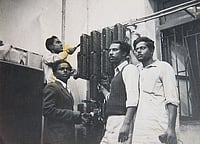Union Minister for Law and Justice Arjun Ram Meghwal announced on Thursday that the Supreme Court has introduced SUVAS, a machine-assisted translation tool driven by Artificial Intelligence, to enhance the accessibility of judicial proceedings in regional languages.
Supreme Court Introduces AI Translation Tool For Regional Languages In Judicial Proceedings
The Supreme Court takes a bold step towards linguistic inclusivity, deploying SUVAS, an AI translation tool, to translate legal documents into eleven regional languages.

Meghwal revealed that SUVAS, developed with technical support from the Ministry of Electronics and Information Technology, is specifically tailored for the judicial domain. Currently capable of translating English judicial documents, orders, or judgments into eleven vernacular languages, this initiative aims to address the need for justice in people's regional languages.
Responding to BJP leader Harnath Singh Yadav's inquiry during a session in the Rajya Sabha, Meghwal emphasized the importance of linguistic inclusivity in the legal system. Chief Justice of India DY Chandrachud also echoed this sentiment, highlighting the Supreme Court's commitment to reaching a broader section of Indian society.
In a notable move, CJI Chandrachud mentioned that the Kesavananda Bharati verdict, a landmark decision that established the "basic structure doctrine" of the Constitution, is now available in 10 Indian languages on the Supreme Court's website. This development aligns with the Court's efforts to commemorate the 50th anniversary of the Kesavananda Bharati case in 2023.
Moreover, the Chief Justice pointed out that the SC has undertaken the translation of a video related to the case into 10 Indian languages, including English, Hindi, Urdu, Bengali, Telugu, Tamil, Odia, Malayalam, Gujarati, Kannada, Assamese, and Marathi. This initiative underscores the Supreme Court's commitment to making legal information more accessible and understandable to a diverse and multilingual population.
Highlighting the Court's continuous efforts in this direction, CJI Chandrachud mentioned that 20,000 judgments have already been uploaded on the e-SCR portal of the court's website, showcasing a longstanding commitment to transparency and inclusivity in disseminating legal information from Independence until the present day.
- Previous Story
 Bypolls In Kerala: Tough Time For Left, Hope For BJP and Yet Another VIP Candidate For Congress
Bypolls In Kerala: Tough Time For Left, Hope For BJP and Yet Another VIP Candidate For Congress - Next Story




















